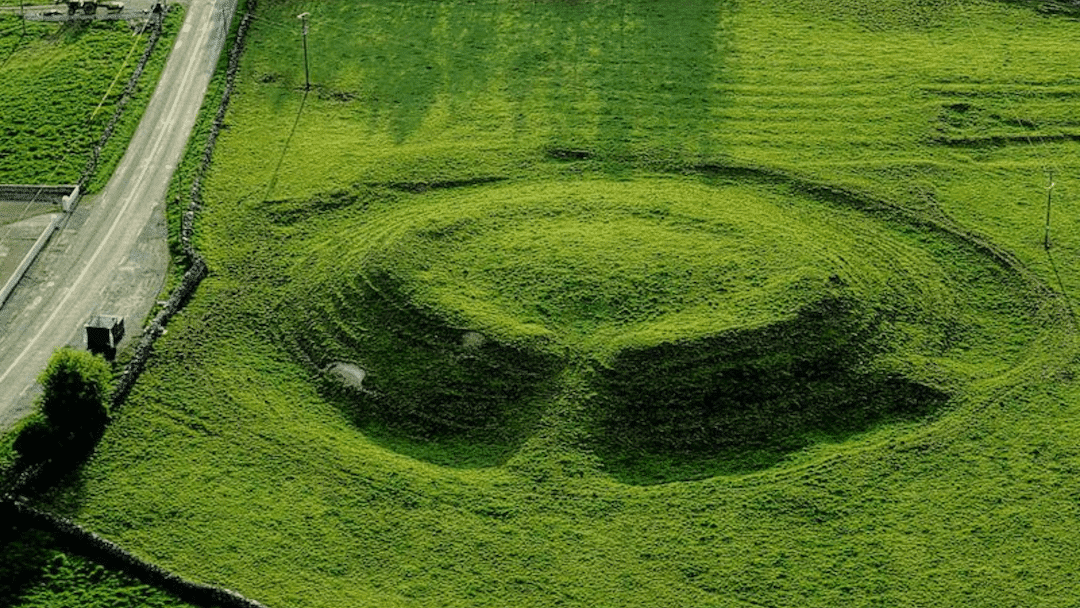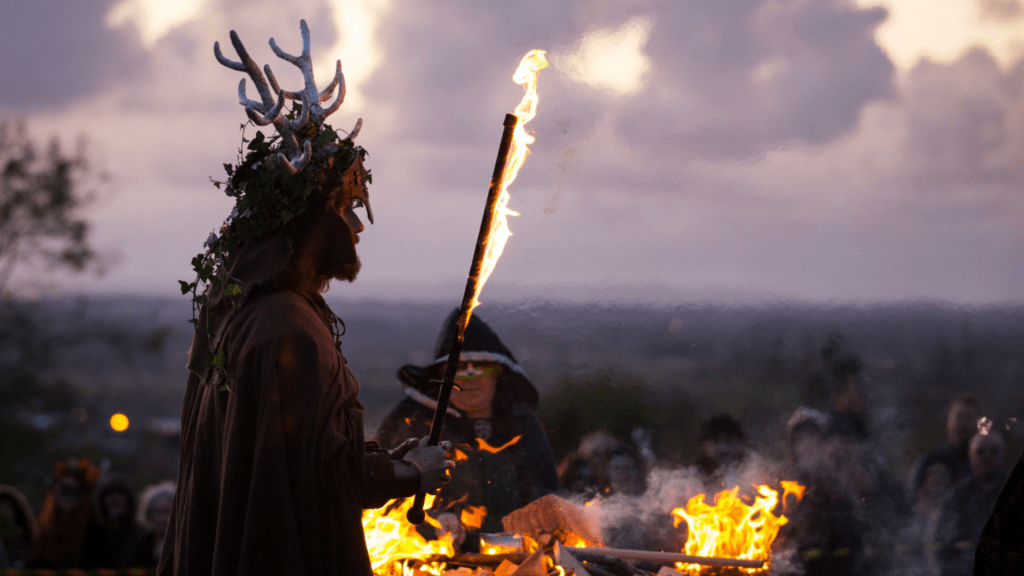Ireland’s Samhain Heritage | About TRAVEL DESTINATIONS
Ireland’s Samhain Heritage – Inside The Cave of Cats
In Ireland, there is a mound with a gruesome past. It was the site of pagan rituals where animals were sacrificed to Celtic demons in the nearby Oweynagat cave. It is also the birthplace of the Samhain festival, the ancient roots of Halloween.
The Rathcroghan area was the centre of the ancient Irish kingdom of Connaught. Today, scientists and historians are decoding the 5,500-year-old mystery of Rathcroghan. Irish archaeologist Daniel Curley is an expert on the site. Its history is a testament to Ireland’s rich cultural heritage, and it may soon receive UNESCO World Heritage status. We can trace Halloween’s roots back to Rathcroghan’s ceremonial celebrations.

Ireland’s Samhain Heritage – Rathcroghan Mound
Rooted In Lore
Rathcroghan is a large site covering 2.5 square miles of fertile land, with 240 archaeological sites, including burial mounds, ring forts, standing stones, earthworks, a ritual sanctuary and Oweynagat, also known as the “Gate to Hell.”
Halloween originated from the Celtic New Year festival, Samhain, which dates back over 2,000 years. Rathcroghan was an essential place for this festival, marking the end of one year and the start of another.
The Oweynagat Cave, also known as the Cave of the Cats.
Rathcroghan was not a town but a place for people to gather for the kingdom’s festivities. During the Samhain festival, the privileged lived in Rathcroghan, surrounded by burial grounds for the Connachta elite. The lower-class Connachta community lived in dispersed farms and only came to the capital for festivals.
People made offerings to the spirits of Ireland’s underworld during the festival. They believed that Celtic devils, fairies, and leprechauns inhabited this underworld. Some of these demons escaped through the Oweynagat cave during Samhain. The Celts disguised themselves as fellow ghouls to avoid being dragged deep into Tír na nÓg by the devils. They also lit fires on hilltops and fields to protect themselves from physical harm.
Rathcroghan is a historical site that has never been excavated. Some experts believe it to be Europe’s largest unexcavated royal complex. Non-invasive technology and artifacts found in the vicinity have helped reveal its archaeological secrets beneath the ground. Archeologists can now do targeted excavation without damaging the site. It is crucial to protect and preserve such historical remains hidden beneath the ground and slowly consumed by nature.
Oweynagat Cave – “Gate to Hell”
Becoming a UNESCO Site
Rathcroghan, a significant historical site in Ireland, has the potential to attract more visitors. One way to promote Rathcroghan is to highlight it as the “Birthplace of Halloween”. Such a promotion could help attract more tourists. Additionally, Rathcroghan could gain more prestige by becoming a UNESCO World Heritage site. However, finding Oweynagat, Rathcroghan’s hell cave and the birthplace of Medb, may be difficult.
Despite the difficulty, visitors can still access Oweynagat by hopping over a fence and walking through a field. It is worth noting that Halloween has been celebrated for over 2,000 years. The tradition of trick-or-treating, which is popular among children today, is rooted in prehistoric customs such as those associated with hell caves, supernatural animals, and a buried Celtic kingdom. 🎃
Sourced from National Geographic.
Plan and consult with our travel agent team for your vacation to Ireland. Our travel experts can help you tailor and customize your Irish dream trip. Contact Total Advantage Travel & Tours today!

